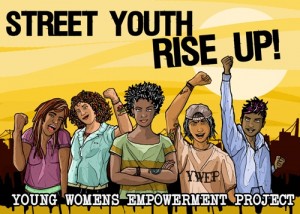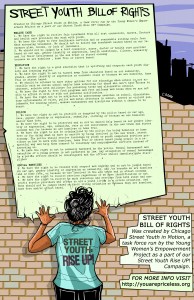‘Things Fall Apart:’ Youth Resist Institutional Violence…
Years ago, I served on the board of an organization that I still love called the Young Women's Empowerment Project (YWEP). YWEP is not to be confused with the Rogers Park Young Women's Action Team (YWAT), a youth-led group that I co-founded and have written about before.
Regular readers of this blog know that I am a prison abolitionist. I have written often about my ideas and thoughts about abolition here. I am often asked about what would happen to all of the “bad” people if there were no prisons. There are tons of people who others would consider “bad” who aren’t locked in cages. So those questions do not concern me. I do however worry about one thing: the fact that many of the institutions that we would need to rely on in order for abolition to be fully realized are so oppressive and fundamentally broken.
Case in point, yesterday the Chicago Tribune reported that Hartgrove pyschiatric hospital on the Westside of Chicago is basically a hell-hole for young people. Citing a new report from the University of Illinois at Chicago, the Tribune writes:
Among the chilling details in the UIC report on Hartgrove were descriptions of some hospital employees who appeared to be indifferent or too poorly trained to treat seriously mentally ill youth.
One case involved a 16-year-old girl with severe sickle cell anemia who was forced to cope with intense pain for long periods of time. When she became overwhelmed and had emotional outbursts as a result, staff blamed her for not being able to control herself.
A psychiatrist at the facility labeled her behavior as “med-seeking,” according to records.
In another case, employees in May reportedly fractured the arm of a 16-year-old boy, who was not a state ward, apparently because they were not properly trained in restraint techniques.
The Tribune also reports that “[a]bout 100 violent incidents were documented between December 2010 and mid-June 2011, which included physical attacks, uncontrolled threatening behavior and sexual assaults.” I feel sick to my stomach in reading this because I have referred several young people to Hartgrove over the years. I never heard that they were mistreated at the hospital but I have to admit to having followed up with less than half of the youth who I referred there. Once released, they would usually be referred to services closer to where they live. The sickening part of this for me is that I assumed that they would get the help that they needed from the hospital. I know better but I just want to believe that the institutions that are supposed to serve vulnerable youth will not actually harm them. How can I be both so jaded and so trusting at the same time?
I do know better. The young women of YWEP have created a bad encounter line that I have written about previously here. YWEP explains the history and purpose of the bad encounter line:
In 2009, YWEP completed a youth led research study on ways girls and transgender girls in the sex trade & street economy are resistant and resilient to violence. In this research we looked at two categories of violence, individual and institutional. Although both categories had surprising results, we were most surprised at the amount of girls and transgender girls facing violence from institutions- like police, hospitals, social services and even Department Children and Family Service.
We wanted to tackle this problem from a community organizing approach from this idea the Bad Encounter Line (BEL) was born. The BEL is a way to report bad experiences you have had with institutions and tracks the neighborhood, gender and time of day so YWEP can learn more about how we are being harmed.
The Bad Encounter Line is an excellent example of how marginalized young people of color resist institutional violence. It also illustrates the young people’s resilience. I am angry that it has to come to this. However I feel so proud that the youth are mobilizing to bring this violence to light. This is a form of violence in the lives of youth that does not garner media attention or award winning documentaries. Yet it is real and can often be debilitating for young people. YWEP also started a task force called “Street Youth in Motion” which is organizing a community march tomorrow. If you are in Chicago tomorrow, you are invited to support the young people at their demonstration.
The Taskforce wrote a Street Youth Bill of Rights (PDF) that they want all non-profits to sign “to [in their words] make them accountable to us and can’t get away with denying us help!”
Ultimately, I guess that this is what should give me hope. Young people are organizing and demanding accountability from the institutions that should be there to help them. This is another example of transformative justice. So perhaps I don’t have to worry about the promise of abolition after all…


